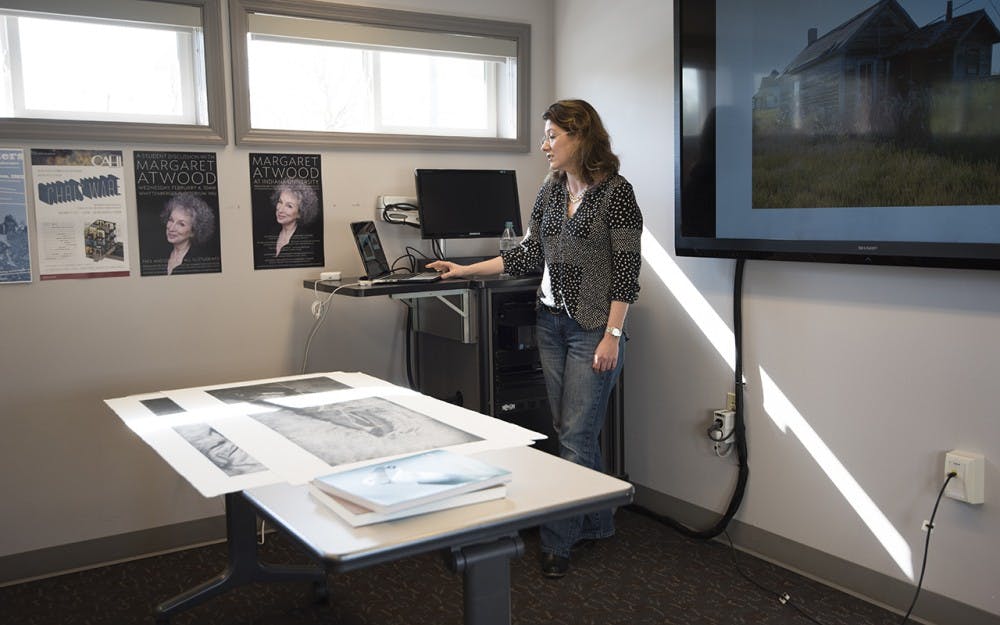A printmaking professor’s most recent series was inspired by the Syrian refugee crisis, homelessness and migration.
Tracy Templeton, who became the head of printmaking at IU in 2013, discussed her recent series “dis-PLACED” in a Tuesday event by the College Arts & Humanities Institute.
The printmaking department itself is part of the Henry Radford Hope School of Fine Arts.
“I wanted to direct the gaze to quiet moments of uncertainty within more haunting events,” Templeton said. “They are universal, but they are personal in nature.”
The prints are in various shades of gray, black and white, some with gold leafing on top, and show empty beds, which Templeton called a “metaphor for someone once having been there.”
“I wanted it to be beautiful, something about an obscure world but also a gentle disquiet,” Templeton said.
Her interest in displacement stems from her childhood in the prairies of Canada, where many homes and farmsteads have been abandoned, Templeton said.
She would photograph abandoned farms and disappearing landscapes and draw from those for ideas for her prints.
“Although I source from specific events as inspiration, I’m not interested in articulating those specifically but rather generating questions about their source,” Templeton said.
Templeton developed the series while she was at Proyecto Ace, a month-long artists’ residency in Buenos Aires, Argentina, focused on print and photographic media.
The residency aims to promote contemporary artists’ practices, including printmaking and photography, and how those can be hybridized, Templeton said.
Templeton created 12 prints while she was at the residency, which she called a record pace for herself.
A lot of residencies are short because they’re made for research, not production, but at Proyecto Ace the artists are able to generate new ideas and explore their practice, Templeton said.
She said artists often work in isolation, so having assistants helping and others to support her work was exciting.
“My favorite part was being part of the dialogue that helped create the series,” Templeton said.
While she was at Proyecto Ace, Templeton explored her local environment and new artistic techniques.
She took printmaking plates onto the terrace of the studio and would kick them around to create tracks, then take digital images and print them in shades of gray and silver.
Templeton’s time at the residency was sponsored by the institute, which exists to support research in arts and humanities for faculty and to publicize faculty’s advanced work, said Jonathan Elmer, the director of the institute.
Elmer said it is important to show how impressive these works are.
Templeton’s presentation made the evolution of her thinking through the series clear, he said.
“She connected the artistic techniques to bigger ideas so somebody like me can understand her decisions and techniques and see where she comes from,” Elmer said.
Templeton’s work has been exhibited throughout the United States and in countries across the world including France and China.
“Seeing different people’s reactions as it travels around the world and feedback of what they think is really rewarding,” Templeton said.






